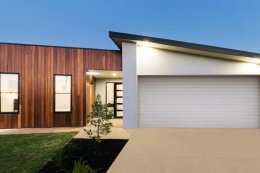
With households across Queensland grappling with the ongoing energy crisis, new Compare the Market research has revealed just how much more we can be forking out when running an air conditioner this summer.
Blasting the air conditioner is one of the easiest ways for Queenslanders to stay cool, as we face warm days, humid conditions and some of the harshest UV rays in the world. But with electricity prices predicted to soar by 50% in the next few financial years, Compare the Market’s Chris Ford warned that it could be an expensive summer.
“We’re heading into a summer where electricity prices are higher than they’ve been in the last couple of years and the last thing we want is for families across Queensland to receive a bill shock after running their air-con,” Mr Ford said. “While it’s no mystery that fans are the more cost-effective method of keeping cool, people may be surprised by how much more running their air condition unit can really cost.”
It costs around 2 cents an hour to run a fan, according to the Department of Climate Change, Energy, the Environment and Water. That’s about 20 cents a day, which would equate to around $30.20 if you were running a fan each day for five months of the year.
Of course, the more fans your home uses, the higher your electricity bill will be. We also investigated the approximate cost of running various types of air conditioning units over the summer months.
“Alarmingly, it costs 605% more to run a small reverse split system compared to a fan each year, while a larger unit can cost 1,860% more,” Mr Ford said. “Similarly, a portable air conditioner may seem like a cost-effective option, but our research shows that it can cost 1,141% more compared to a fan to run.”
| Air conditioning type | Brand | Energy star rating | Annual running cost | Installation Cost |
| Reverse split (small unit) | Panasonic C2.5kW H3.2kW Reverse Cycle Split System and Air Purifier | 4 | $213.75 | $600-750 |
| Reverse split (medium unit) | Fujitsu C5.0kW H6.0kW Reverse Cycle Split System | 4 | $435.00 | $600-1000 |
| Reverse split (large unit) | Fujitsu C6.0kW H7.2kW Reverse Cycle Split System | 4 | $592.50 | $600 – $1500 (depending on unit size) |
| Ducted | Samsung 5.2kw Model AC052HBHF | NA (not required for ducted systems) | $495.00 | $5000 – $11000 approx (depending on house size) |
| Window box | Kelvinator C5.2kW Cool Only Box Air Conditioner | 2 | $596.25 | $150 – $500 |
| Portable | Dimplex 2.5kW Portable Air Con w/Dehumidifier | NA | $375.00 | Free – you simply purchase and plug in at a power point |
Assuming a home in Brisbane (4000) with electricity usage of 25 c/kWh uses their air conditioner for 10 hours per day, for five months of the year. Actual costs may vary depending on the size of your room, how often you use your air conditioner, the temperature you set your air conditioner and how many air conditioners you use. Calculated using the Government’s Energy Rating calculator. Accurate as of 28/11/2022
“Window box air conditioners came out as the most expensive option of those we analysed,” Mr Ford said. “While a little outdated, they’re still common in many apartments and smaller homes. These units typically have a lower energy star rating, which is why they can cost more to operate than ducted or reverse split units.”
Portable units usually come with a lower upfront cost and don’t require professional installation, but again, these units can chew through more electricity than other options.
“Our analysis shows that reverse split systems will give you more bang for your buck if you’re in the market for a new air conditioner,” Mr Ford said. “Even a larger unit came in at a lower price than ducted air conditioning. Keep in mind that our research only looked at the price of running one unit and if you live in a larger home, a ducted unit may still be the more viable option.”
Regardless of which type of air conditioning unit you have, Mr Ford said that your usage habits could ultimately impact the price of your bill.
“Ideally, set the temperature to between 25 and 27°C on warm days,” Mr Ford said. “Be aware that for every degree cooler you set the temperature, you could be increasing your electricity costs by 10%. That really adds up if you’re running more than one system at a time.”
Other factors that may impact your bill include:
- your frequency of use
- size and capacity of the air conditioner, relevant to the size of the room or area of space that you’re heating or cooling.
- energy-efficiency rating
- your energy retailer’s usage rates.
Mr Ford offers his top tips for finding the right air conditioner for your home and for reducing your electricity bill.
- Know the size of the room you’re looking to cool. When you go to a supplier or retailer, it pays to know the room’s length, width and ceiling height for a single unit or space of the house for the air conditioning system. After all, you don’t want to end up with an AC that doesn’t cool your area enough.
- Is your home adequately insulated? Ceiling, wall and floor insulation can have a massive effect on air conditioning. If you don’t have roof insulation, consider installing some, as it could save you on running costs.
- How warm does it get at your address? It goes without saying that Queensland has warm temperatures and not all air conditioners will have the same cooling impact. For comfort, you may require a more powerful air conditioner, but this could also blow out your bill. Similarly, if your home has a lot of windows that let in light and heat, consider:
– shutting blinds and curtains
– installing outdoor awnings
– closing doors and windows - Do you have solar? If your home is equipped with solar panels, remember that running the air conditioner during the day when your system generates power could lower your overall bill. If you have a solar battery, you may be able to store solar power and then use it at night to blast your air conditioner.
- What electricity plan are you on? With the electricity market changing rapidly, it could be worth comparing your current plan against others on the market. If it’s been more than a few months since you’ve switched plans, see what else is available and if you can pay less for the electricity you use.
For more information, please contact:
Phillip Portman | 0437 384 471 | [email protected]
Compare the Market is a comparison service that takes the hard work out of shopping around. We make it Simples for Australians to quickly and easily compare and buy insurance, energy and travel products from a range of providers. Our easy-to-use comparison tool helps you look for a range of products that may suit your needs and benefit your back pocket.








